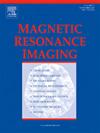使用轻量级和高效的卷积神经网络去噪高分辨率3D UTE-MR血管造影数据。
IF 2
4区 医学
Q2 RADIOLOGY, NUCLEAR MEDICINE & MEDICAL IMAGING
引用次数: 0
摘要
高分辨率磁共振血管造影(~ 50 μm3)数据对各种血管疾病的准确诊断起着至关重要的作用。然而,它的获取是非常具有挑战性的,而且它很容易受到伪影和噪音的影响,这限制了它可视化较小血管的能力,需要采取大量的降噪措施。在许多技术中,BM4D滤波器是一种最先进的去噪技术,但计算成本很高,特别是对于高分辨率3D MRA数据。在这项研究中,使用五种不同的优化卷积神经网络使用监督学习方法对对比度增强的UTE-MRA数据进行降噪。由于无噪声的MRA数据难以获取,因此采用BM4D滤波去噪后的图像作为地真值,本研究主要集中在降低高分辨率UTE-MRA数据去噪的计算成本和推理时间上。与使用不同计算足迹的真实情况相比,所有五种模型都能够生成几乎相似的去噪数据。其中,嵌套unet模型生成的图像与ground truth基本相似,SSIM、PSNR和MSE分别为0.998、46.12和3.38e-5,推理时间比BM4D滤波器快3倍。此外,大多数优化模型如UNet和attention-UNet模型生成的图像与nested-UNet几乎相似,但比BM4D滤波器快8.8倍和7.1倍。总之,使用高度优化的网络,我们已经证明了用更短的推理时间去噪高分辨率UTE-MRA数据的可能性,即使是来自动物模型的有限数据集。这可能会降低高分辨率3D UTE-MRA数据的计算负担。本文章由计算机程序翻译,如有差异,请以英文原文为准。
Denoising of high-resolution 3D UTE-MR angiogram data using lightweight and efficient convolutional neural networks
High-resolution magnetic resonance angiography (∼ 50 μm3 MRA) data plays a critical role in the accurate diagnosis of various vascular disorders. However, it is very challenging to acquire, and it is susceptible to artifacts and noise which limits its ability to visualize smaller blood vessels and necessitates substantial noise reduction measures. Among many techniques, the BM4D filter is a state-of-the-art denoising technique but comes with high computational cost, particularly for high-resolution 3D MRA data. In this research, five different optimized convolutional neural networks were utilized to denoise contrast-enhanced UTE-MRA data using a supervised learning approach. Since noise-free MRA data is challenging to acquire, the denoised image using BM4D filter was used as ground truth and this research mainly focused on reducing computational cost and inference time for denoising high-resolution UTE-MRA data. All five models were able to generate nearly similar denoised data compared to the ground truth with different computational footprints. Among all, the nested-UNet model generated almost similar images with the ground truth and achieved SSIM, PSNR, and MSE of 0.998, 46.12, and 3.38e-5 with 3× faster inference time than the BM4D filter. In addition, most optimized models like UNet and attention-UNet models generated nearly similar images with nested-UNet but 8.8× and 7.1× faster than the BM4D filter. In conclusion, using highly optimized networks, we have shown the possibility of denoising high-resolution UTE-MRA data with significantly shorter inference time, even with limited datasets from animal models. This can potentially make high-resolution 3D UTE-MRA data to be less computationally burdensome.
求助全文
通过发布文献求助,成功后即可免费获取论文全文。
去求助
来源期刊

Magnetic resonance imaging
医学-核医学
CiteScore
4.70
自引率
4.00%
发文量
194
审稿时长
83 days
期刊介绍:
Magnetic Resonance Imaging (MRI) is the first international multidisciplinary journal encompassing physical, life, and clinical science investigations as they relate to the development and use of magnetic resonance imaging. MRI is dedicated to both basic research, technological innovation and applications, providing a single forum for communication among radiologists, physicists, chemists, biochemists, biologists, engineers, internists, pathologists, physiologists, computer scientists, and mathematicians.
 求助内容:
求助内容: 应助结果提醒方式:
应助结果提醒方式:


